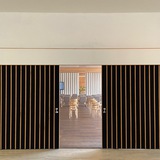Перед вами «Asmara», очередной пример домашнего ландшафта и символ раскрепощенности 1960-х годов. В 1966 г. вслед за многими другими дизайнерами, переосмысливавшими рельеф и конфигурацию традиционного дивана, 26-летний дизайнер Бернар Говен, за три года до этого основавший собственное ателье, предложил компании «Ligne Roset» проект системы из нескольких скульптурных модулей, на несколько лет опередив своего соотечественника Пьера Полена и его диван «Dune».
Идея создать такой набор пуфов из полиуретана сформировалась довольно органично, ведь у дизайнера еще были свежи воспоминания об учебе в парижской Школе прикладного искусства Дюперре и Институте промышленной эстетики: «Я долгое время жил по-студенчески: даже когда было на чем сидеть, мы предпочитали растягиваться на полу». В том же году Говен представил свое изобретение на выставке художников-декораторов, а уже в 1967 г. «Ligne Roset» начала выпуск этой системы, со временем ставшей одним из наиболее узнаваемых продуктов компании и символом «сексуальной свободы и эмансипации чувств» (по крайней мере, по мнению производителя).
———
Please meet Asmara, yet another example of domestic “landscape” and an icon of the uninhibited 1960s. In 1966, as many other designers were reinventing the form and structure of a traditional sofa, 26-year-old Bernard Govin approached Ligne Rosen with his own vision of what future (or futuristic) seats should be. Having set up his own design studio three years earlier, Govin came up with a system of sculptural modules that predated Pierre Paulin’s Dune by a few years.
The idea of his Asmara low seating units made of polyurethane was an organic interpretation of Govin’s student experiences. A graduate of the Duperré School of Applied Arts in Paris and Institute of Industrial Design, Govin had fresh memories of his university years: “I lived student-style for a long time: Even if we had seats, we lolled on the floor”. Later in 1966, Govin exhibited his design at the Salon des Artistes Décorateurs and, in 1967, the Asmara line was launched by Ligne Roset to quickly become one of their most recognizable products and a symbol of “sexual freedom and sensual emancipation", as marketed by the manufacturer.
(photos: design.tel, fattorinidesign.com, mdbarchitects.com, demischdanant.com, interiordesign.net, ligne-roset.com)
Идея создать такой набор пуфов из полиуретана сформировалась довольно органично, ведь у дизайнера еще были свежи воспоминания об учебе в парижской Школе прикладного искусства Дюперре и Институте промышленной эстетики: «Я долгое время жил по-студенчески: даже когда было на чем сидеть, мы предпочитали растягиваться на полу». В том же году Говен представил свое изобретение на выставке художников-декораторов, а уже в 1967 г. «Ligne Roset» начала выпуск этой системы, со временем ставшей одним из наиболее узнаваемых продуктов компании и символом «сексуальной свободы и эмансипации чувств» (по крайней мере, по мнению производителя).
———
Please meet Asmara, yet another example of domestic “landscape” and an icon of the uninhibited 1960s. In 1966, as many other designers were reinventing the form and structure of a traditional sofa, 26-year-old Bernard Govin approached Ligne Rosen with his own vision of what future (or futuristic) seats should be. Having set up his own design studio three years earlier, Govin came up with a system of sculptural modules that predated Pierre Paulin’s Dune by a few years.
The idea of his Asmara low seating units made of polyurethane was an organic interpretation of Govin’s student experiences. A graduate of the Duperré School of Applied Arts in Paris and Institute of Industrial Design, Govin had fresh memories of his university years: “I lived student-style for a long time: Even if we had seats, we lolled on the floor”. Later in 1966, Govin exhibited his design at the Salon des Artistes Décorateurs and, in 1967, the Asmara line was launched by Ligne Roset to quickly become one of their most recognizable products and a symbol of “sexual freedom and sensual emancipation", as marketed by the manufacturer.
(photos: design.tel, fattorinidesign.com, mdbarchitects.com, demischdanant.com, interiordesign.net, ligne-roset.com)
group-telegram.com/midcenturymodern/16592
Create:
Last Update:
Last Update:
Перед вами «Asmara», очередной пример домашнего ландшафта и символ раскрепощенности 1960-х годов. В 1966 г. вслед за многими другими дизайнерами, переосмысливавшими рельеф и конфигурацию традиционного дивана, 26-летний дизайнер Бернар Говен, за три года до этого основавший собственное ателье, предложил компании «Ligne Roset» проект системы из нескольких скульптурных модулей, на несколько лет опередив своего соотечественника Пьера Полена и его диван «Dune».
Идея создать такой набор пуфов из полиуретана сформировалась довольно органично, ведь у дизайнера еще были свежи воспоминания об учебе в парижской Школе прикладного искусства Дюперре и Институте промышленной эстетики: «Я долгое время жил по-студенчески: даже когда было на чем сидеть, мы предпочитали растягиваться на полу». В том же году Говен представил свое изобретение на выставке художников-декораторов, а уже в 1967 г. «Ligne Roset» начала выпуск этой системы, со временем ставшей одним из наиболее узнаваемых продуктов компании и символом «сексуальной свободы и эмансипации чувств» (по крайней мере, по мнению производителя).
———
Please meet Asmara, yet another example of domestic “landscape” and an icon of the uninhibited 1960s. In 1966, as many other designers were reinventing the form and structure of a traditional sofa, 26-year-old Bernard Govin approached Ligne Rosen with his own vision of what future (or futuristic) seats should be. Having set up his own design studio three years earlier, Govin came up with a system of sculptural modules that predated Pierre Paulin’s Dune by a few years.
The idea of his Asmara low seating units made of polyurethane was an organic interpretation of Govin’s student experiences. A graduate of the Duperré School of Applied Arts in Paris and Institute of Industrial Design, Govin had fresh memories of his university years: “I lived student-style for a long time: Even if we had seats, we lolled on the floor”. Later in 1966, Govin exhibited his design at the Salon des Artistes Décorateurs and, in 1967, the Asmara line was launched by Ligne Roset to quickly become one of their most recognizable products and a symbol of “sexual freedom and sensual emancipation", as marketed by the manufacturer.
(photos: design.tel, fattorinidesign.com, mdbarchitects.com, demischdanant.com, interiordesign.net, ligne-roset.com)
Идея создать такой набор пуфов из полиуретана сформировалась довольно органично, ведь у дизайнера еще были свежи воспоминания об учебе в парижской Школе прикладного искусства Дюперре и Институте промышленной эстетики: «Я долгое время жил по-студенчески: даже когда было на чем сидеть, мы предпочитали растягиваться на полу». В том же году Говен представил свое изобретение на выставке художников-декораторов, а уже в 1967 г. «Ligne Roset» начала выпуск этой системы, со временем ставшей одним из наиболее узнаваемых продуктов компании и символом «сексуальной свободы и эмансипации чувств» (по крайней мере, по мнению производителя).
———
Please meet Asmara, yet another example of domestic “landscape” and an icon of the uninhibited 1960s. In 1966, as many other designers were reinventing the form and structure of a traditional sofa, 26-year-old Bernard Govin approached Ligne Rosen with his own vision of what future (or futuristic) seats should be. Having set up his own design studio three years earlier, Govin came up with a system of sculptural modules that predated Pierre Paulin’s Dune by a few years.
The idea of his Asmara low seating units made of polyurethane was an organic interpretation of Govin’s student experiences. A graduate of the Duperré School of Applied Arts in Paris and Institute of Industrial Design, Govin had fresh memories of his university years: “I lived student-style for a long time: Even if we had seats, we lolled on the floor”. Later in 1966, Govin exhibited his design at the Salon des Artistes Décorateurs and, in 1967, the Asmara line was launched by Ligne Roset to quickly become one of their most recognizable products and a symbol of “sexual freedom and sensual emancipation", as marketed by the manufacturer.
(photos: design.tel, fattorinidesign.com, mdbarchitects.com, demischdanant.com, interiordesign.net, ligne-roset.com)
BY Mid-Century, More Than
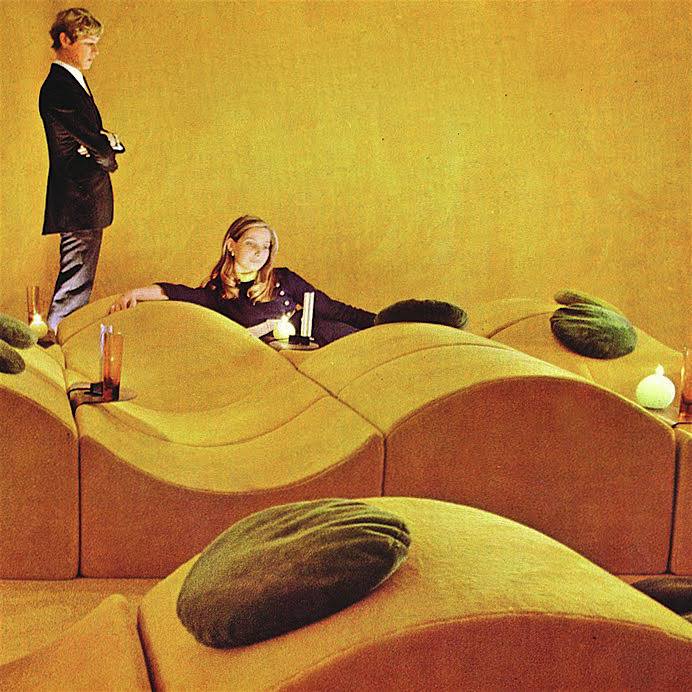
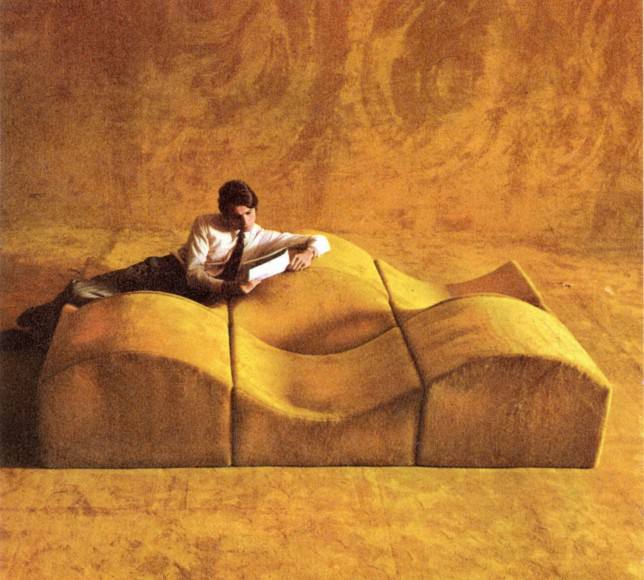
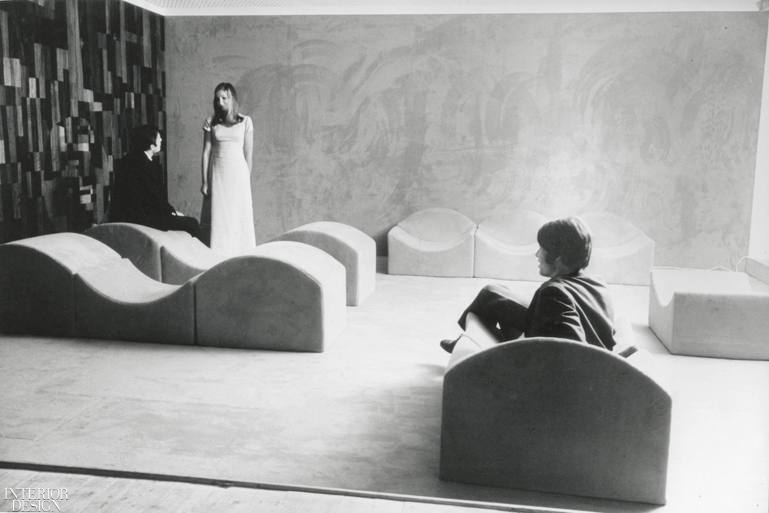
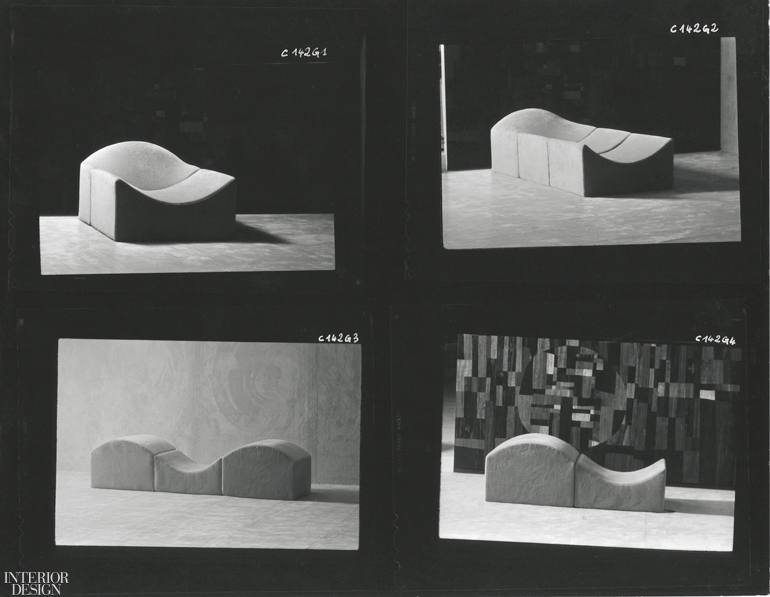
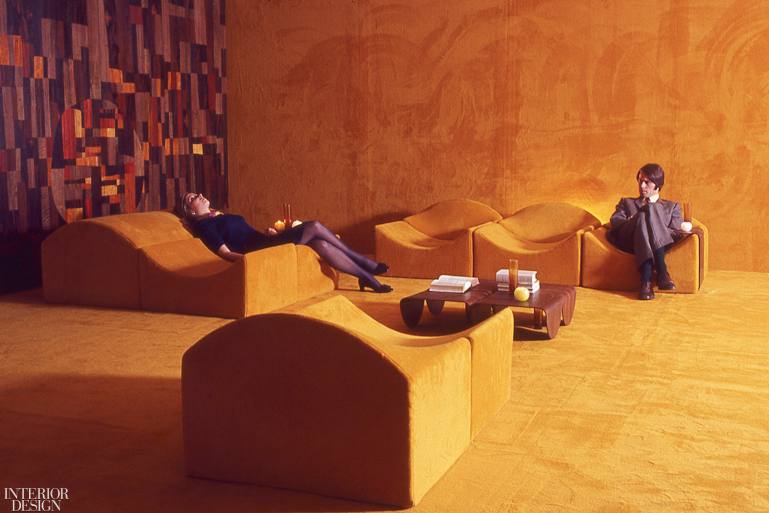
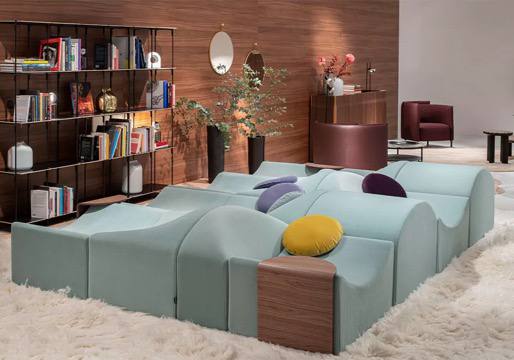
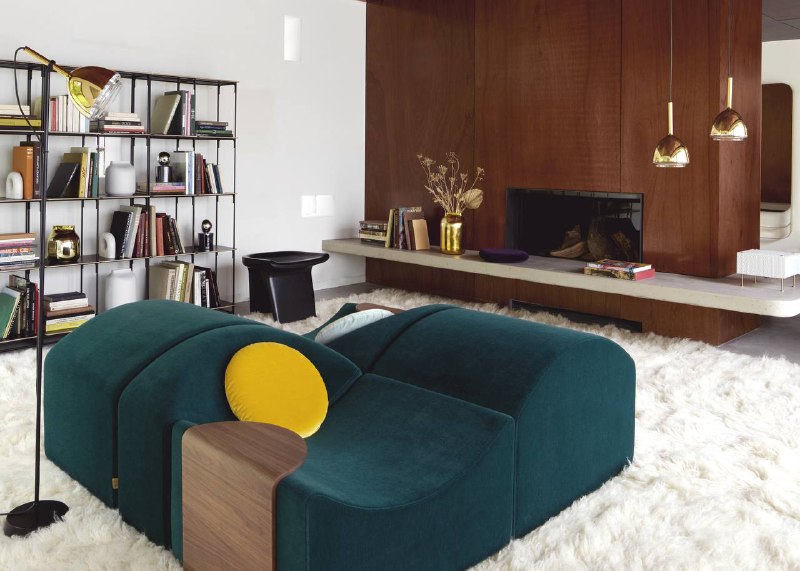
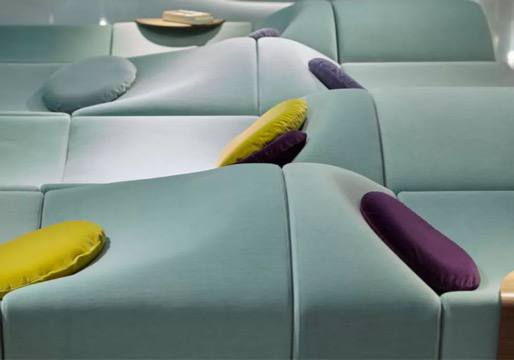
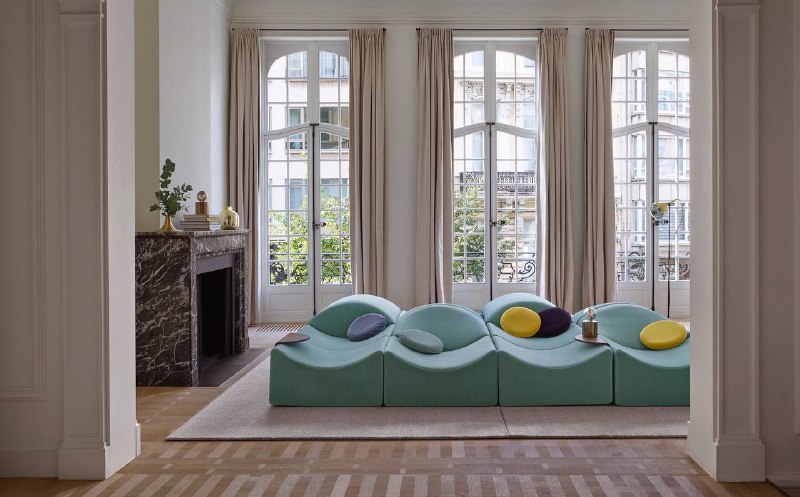
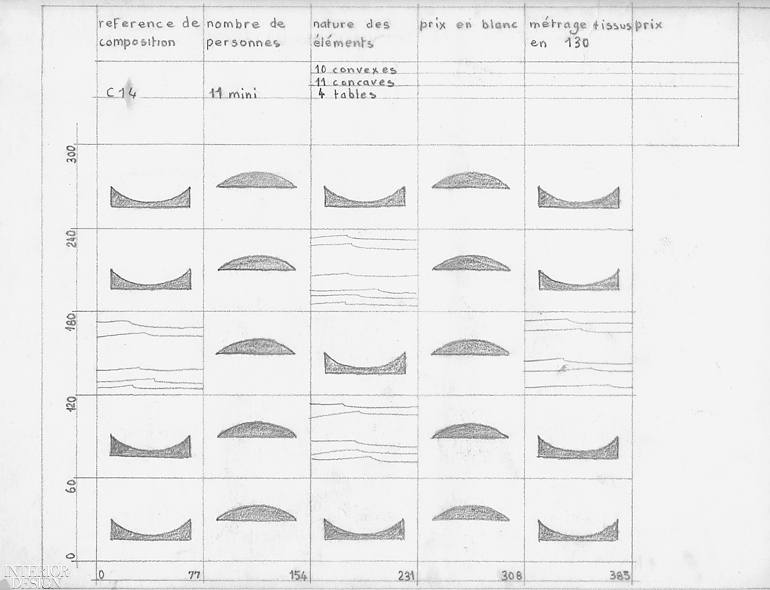
Share with your friend now:
group-telegram.com/midcenturymodern/16592
